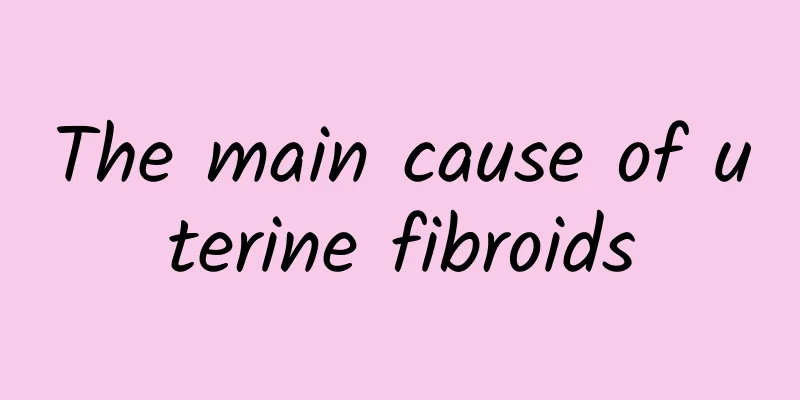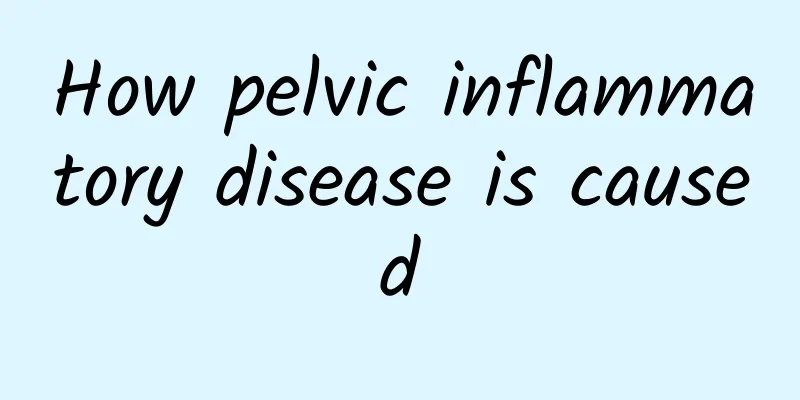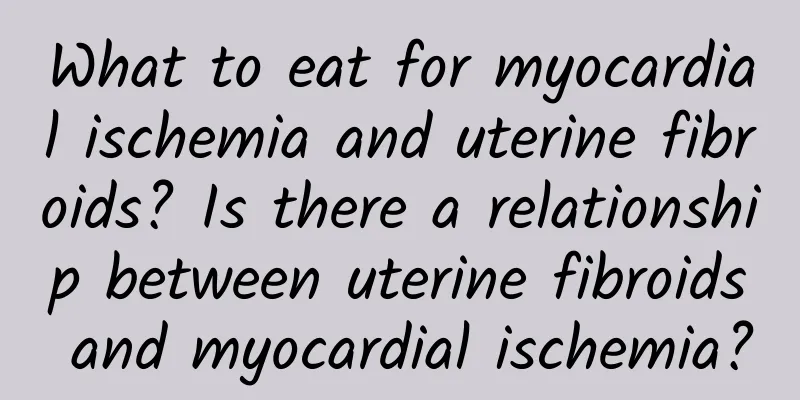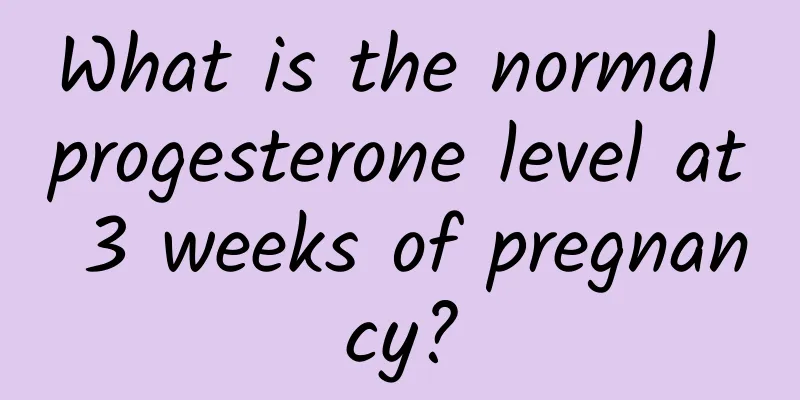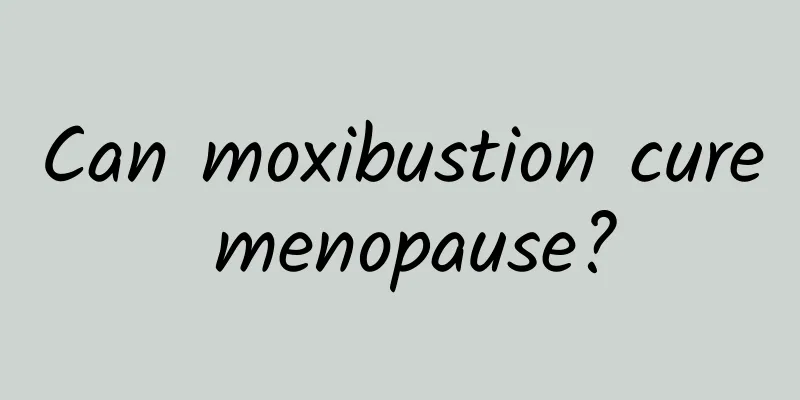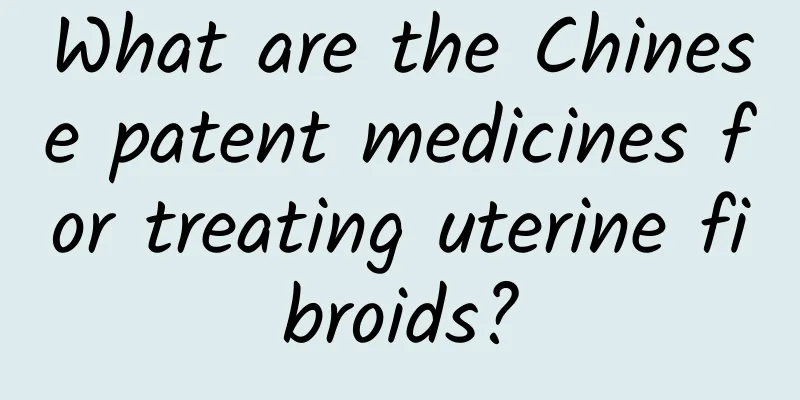What should I do with uterine fibroids? Three surgical treatments for uterine fibroids

|
1. Causes of uterine fibroids The etiology of uterine fibroids is still unclear and may involve a complex interaction between normal myometrial cell mutations, sex hormones, and local growth factors. 2. Symptoms of uterine fibroids Most patients have no symptoms and are only occasionally found during pelvic examination or ultrasound examination. If there are symptoms, they are closely related to the growth site, speed, degeneration and complications of the fibroids, and are relatively less related to the size and number of the fibroids. Patients with multiple subserosal fibroids may have no symptoms, while smaller submucosal fibroids often cause irregular vaginal bleeding or menorrhagia. Common clinical symptoms are: (1) Uterine bleeding The main symptoms of uterine fibroids are more than half of the patients. Among them, periodic bleeding is more frequent, which can be manifested as increased menstrual volume, prolonged menstrual period or shortened cycle. It can also be manifested as irregular vaginal bleeding during menstrual cycle. Submucosal fibroids and intramural fibroids often cause uterine bleeding, while subserosal fibroids rarely cause uterine bleeding. (2) Abdominal mass and compression symptoms Myomas grow gradually. When the uterus is enlarged for more than 3 months or is located at the bottom of the uterus, a mass in the abdomen can often be felt, and the bladder is more obvious in the morning. The mass is substantial, movable, and non-tender. When myomas grow to a certain size, they can cause symptoms of compression of surrounding organs. Myomas on the anterior wall of the uterus close to the bladder can cause frequent urination and urgency; huge cervical myomas compressing the bladder can cause poor urination or even urinary retention; myomas on the posterior wall of the uterus, especially canyon or posterior lip of the cervix, can compress the rectum, causing poor defecation and discomfort; huge broad ligament myomas can compress the ureters and even cause hydronephrosis. (3) Pain Generally, uterine fibroids do not cause pain, but many patients may complain of lower abdominal swelling and back pain. Acute abdominal pain may occur when the pedicle of a subserosal fibroid is twisted or when a uterine fibroid undergoes red degeneration. Endometriosis or adenomyosis is not uncommon, and dysmenorrhea may occur. (4) Increased vaginal discharge The uterine cavity is enlarged, the endometrial glands increase, and the pelvic cavity is congested, which can increase leucorrhea. When the uterine or cervical submucosal fibroids ulcerate, become infected, or necrotic, bloody or purulent leucorrhea will be produced. (5) Infertility and miscarriage Some patients with uterine fibroids are infertile or prone to miscarriage. The impact on conception and pregnancy outcomes may be related to the location, size and number of fibroids. Huge uterine fibroids can cause deformation of the uterine cavity, hindering the implantation of the gestational sac and the growth and development of the embryo; fibroids compressing the fallopian tubes can cause obstruction of the lumen; submucosal fibroids can hinder the implantation of the gestational sac or affect the entry of sperm into the uterine cavity. The spontaneous abortion rate of patients with fibroids is higher than that of the normal population, with a ratio of about 4:1. (6) Anemia Long-term menorrhagia or irregular vaginal bleeding may cause hemorrhagic anemia, and patients with submucosal fibroids often suffer from severe anemia. (7) Others Rarely, patients with uterine fibroids may experience polycythemia and hypoglycemia, which are usually related to ectopic hormone production by the tumor. 3. Surgical treatment of uterine fibroids Surgical treatment of uterine fibroids includes myomectomy and hysterectomy, which can be performed abdominally, vaginally, or endoscopically (hysteroscopy or laparoscopy). The choice of surgery and surgical method depends on factors such as the patient's age, fertility requirements, size of the fibroid, location of growth, and medical technology conditions. (1) Myomectomy The surgery to remove uterine fibroids and preserve the uterus is mainly used for young women under 40 who want to retain their fertility. It is suitable for those with large fibroids, heavy menstruation, compression symptoms, infertility caused by fibroids, submucosal fibroids, and fibroids that grow rapidly but have not become malignant. (2) Hysterectomy The symptoms are obvious, the fibroids may change to malignant changes, and there is no fertility requirement. Hysterectomy is suitable. Hysterectomy can be total hysterectomy or subtotal hysterectomy. The patient is older and is suitable for total hysterectomy. The possibility of cervical malignancy must be eliminated before surgery. (3) Uterine artery embolization Through radiological intervention, an arterial catheter is directly inserted into the uterine artery, and permanent embolic particles are injected to block the blood supply of uterine fibroids, so as to shrink or even disappear the fibroids. UAE is currently mainly suitable for uterine fibroids with symptoms such as anemia caused by abnormal uterine bleeding. When choosing interventional treatment for uterine fibroids, caution should be exercised, especially for patients with uncontrolled pelvic inflammation, patients who wish to retain fertility, arteriosclerosis, and contraindications to angiography should be listed as contraindications to this treatment. 5% of patients may have premature ovarian failure and rare pelvic infections after surgery. |
<<: What to do if you have uterine fibroids? Surgical treatment of uterine fibroids
Recommend
What are the symptoms of cervical hypertrophy?
Cervical hypertrophy is also a common gynecologic...
What is endometriosis?
It is well known that endometriosis is a very com...
What are the common causes of recurrence of pelvic inflammatory disease?
What are the common causes of pelvic inflammatory...
How can female friends prevent the occurrence of adnexitis?
How can women prevent adnexitis? As a common gyne...
What are the nursing measures for pelvic inflammatory disease?
What aspects should be paid attention to in the c...
Gynecologists explain the causes of cervical precancerous lesions
In life, we all know that cervical cancer is a ma...
Why do you need to hold your urine when doing ultrasound for uterine fibroids? Do you need to hold your urine when doing ultrasound for uterine fibroids?
Why do you need to hold your urine when you have ...
Are the symptoms of hyperprolactinemia obvious?
Hyperprolactinemia is a very common disease, whic...
Acupuncture is a difficult treatment for "dysfunctional uterine bleeding"
Traditional Chinese medicine calls functional ute...
What are the symptoms of cervicitis
The symptoms of cervicitis mainly include cervica...
The dangers of ovarian cyst torsion during pregnancy
Ovarian cyst torsion during pregnancy can cause s...
How to differentiate miscarriage
No one wants to see an unexpected miscarriage aft...
How to treat an invasive mole
How is an invasive mole treated? 1. Invasive mole...
What is the cause of endometrial thickness after years of amenorrhea?
Thick endometrium after years of amenorrhea may b...
The Line Between Beauty and Ugliness: Autologous Fat Transplantation (Part 1)
"Doctor, I heard that autologous fat transpl...
